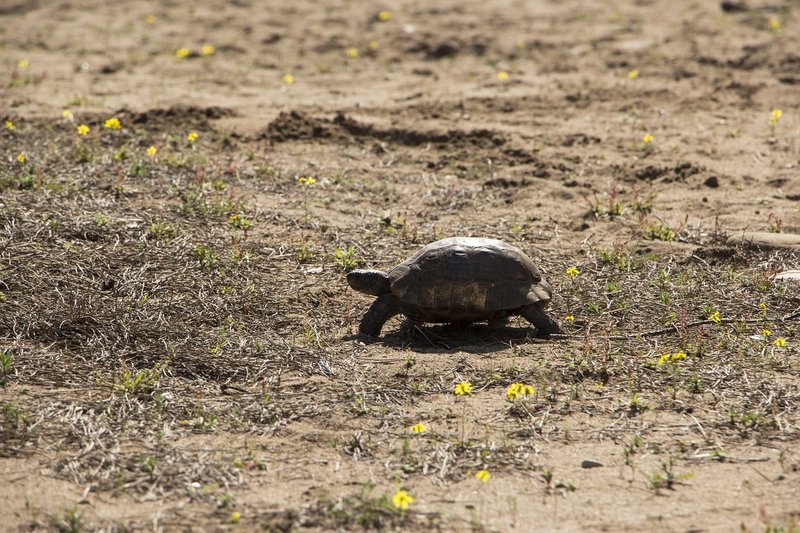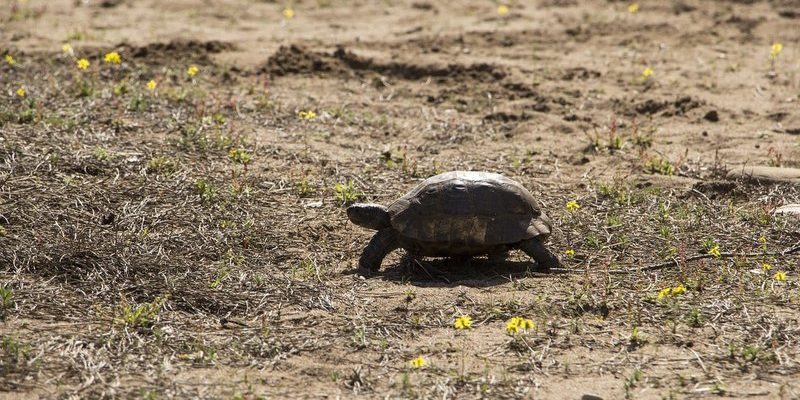
When you think of a turtle, you might picture a small creature slowly plodding along the ground. But the hard-shelled turtle is much more than that! These remarkable animals are known for their sturdy, protective shells, which serve as a shield against predators. Picture a tiny fortress on legs! The hard shell is made from bone and covered with a layer called keratin, which is the same stuff as your hair and nails. This unique structure not only offers protection but also helps regulate their temperature.
Hard-shelled turtles are part of a larger group called turtles, which also includes soft-shelled turtles and tortoises. They are found all around the world, from the lush tropics to temperate forests. You might be surprised to learn that there are over 300 species of hard-shelled turtles! Each one has its own special characteristics and habitat preferences. Let’s dive into the fascinating details of these unique reptiles and see what makes them so special.
Physical Characteristics
Hard-shelled turtles are well-known for their distinctive appearance. Their shells come in different shapes and colors, depending on the species. Generally, the top part of the shell, called the carapace, is dome-shaped and varies from smooth to rough in texture. The bottom part, known as the plastron, is flatter and provides a safeguard to their underbelly. You might be wondering, “How big can they get?” Well, sizes range from tiny species that fit in the palm of your hand to giants like the Leatherback sea turtle, which can weigh over 1,500 pounds!
Additionally, hard-shelled turtles have webbed feet or flippers, allowing them to swim gracefully through the water. Their strong legs are adapted well to both land and aquatic habitats. Even more fascinating is their behavior; while most turtles are non-aggressive, some can exhibit territorial behavior when it comes to nesting sites. The colors of their shells can help with camouflage, making it easier for them to blend into their surroundings and avoid predators.
Habitat and Distribution
Hard-shelled turtles are incredibly adaptable and inhabit a wide range of environments. You’ll often find them in freshwater lakes, rivers, and ponds, but they can also live in brackish and saltwater areas. Some species, like the Box turtle, are terrestrial and prefer forests or grasslands. Their distribution spans across every continent except Antarctica, showcasing their resilience and adaptability to varying climates.
In terms of lifestyle, many hard-shelled turtles spend a good portion of their lives in the water. They’re excellent swimmers, using their powerful legs to propel themselves. Interestingly, some species may bask on rocks or logs to soak up the sun, which is vital for their health. Different species have adapted uniquely to their environments, choosing habitats that suit their dietary needs and living conditions. For instance, the Green sea turtle thrives in coral reefs, while the Eastern box turtle prefers moist woodlands.
Diet and Feeding Habits
The diet of hard-shelled turtles can vary significantly depending on their species. Some are strict herbivores, while others are omnivorous. For instance, Green sea turtles primarily munch on sea grasses and algae, while the Painted turtle will consume a mix of plants, insects, and even small fish. It’s fascinating how each turtle adapts its diet based on what’s available in its habitat!
Typically, their feeding habits include grazing on seagrasses or foraging for insects and aquatic plants. Hard-shelled turtles have strong jaws that help them bite through tough vegetation. You might see them use their beaks to scrape algae off rocks in their underwater realm. These feeding behaviors not only help them survive but also play a crucial role in maintaining the health of their ecosystems.
Reproduction and Lifespan
Hard-shelled turtles have a unique and intriguing reproductive process. Most species are known for their nesting behaviors, where females travel significant distances to lay eggs on land. Depending on the species, a female turtle might lay anywhere from a handful to over a hundred eggs! After laying, she often leaves her eggs to fend for themselves, which may sound harsh, but that’s nature’s way.
The eggs incubate in the warm sand or soil, and the hatching process is a miraculous sight to see! Baby turtles, or hatchlings, typically emerge from their eggs after a couple of months and make a mad dash for the nearest water source. Unfortunately, many face dangers along the way, from predators to environmental obstacles. As for their lifespan, hard-shelled turtles can live quite a long time—many species live to be over 50 years old, with some even reaching 100 years!
Conservation Status
Sadly, many hard-shelled turtle species are facing serious threats due to habitat loss, poaching, and pollution. Their shells, while protective, can also make them vulnerable to human activities. For instance, turtle shells are sometimes used for decorative purposes or sold in illegal wildlife trade. Conservation efforts are underway to protect these unique creatures. Organizations work tirelessly to create protected habitats, raise awareness, and even rehabilitate injured turtles.
It’s crucial for us to understand our role in preserving these beautiful animals. By supporting conservation programs, reducing plastic usage, and spreading awareness about the importance of hard-shelled turtles in our ecosystems, we can help ensure their survival for generations to come. Every little action counts!
| Species | Size | Diet | Lifespan | Habitat |
| Green Sea Turtle | 3-4 feet (0.9-1.2m) | Herbivore | 80+ years | Coral reefs, coastal waters |
| Box Turtle | 4-7 inches (10-18 cm) | Omnivore | 50+ years | Forests, grasslands |
| Leatherback Sea Turtle | 4.5-6.5 feet (1.4-2 m) | Jellyfish | 50+ years | Open ocean |
Unique Behaviors
Hard-shelled turtles are full of surprises when it comes to their behavior! For starters, some species may exhibit migratory patterns, traveling great distances in search of food or suitable nesting sites. The Leatherback sea turtle, for instance, can journey thousands of miles between their feeding and nesting grounds. It’s a remarkable testament to their endurance and instinctual behavior!
Interestingly, turtles also display social behaviors. While they are generally solitary animals, some species are known to bask together on rocks or logs. This communal behavior isn’t just for warmth; it can also help them feel safer from predators. When in groups, they can watch out for each other, which is a smart survival strategy!
In Conclusion
Hard-shelled turtles are truly remarkable creatures, exemplifying resilience and adaptability in nature. Their fascinating physical traits, unique behaviors, and the roles they play in their ecosystems make them worthy of our attention and protection. As we continue to learn about these incredible animals, let’s take a moment to appreciate their presence and advocate for their conservation. After all, the more we know about hard-shelled turtles, the better we can do in protecting them for the future!
FAQ
Are hard-shelled turtles good pets?
Hard-shelled turtles can be kept as pets, but they require specific care and conditions to thrive. It’s important to provide a suitable habitat, which should include both land and water areas, as well as adequate heating and lighting. Additionally, be sure to research the specific species you’re interested in, as different turtles have different needs. Always consider adopting from a rescue or reputable breeder rather than buying from a pet store.
How can I help protect hard-shelled turtles?
There are several ways you can contribute to the conservation of hard-shelled turtles. Simple actions like reducing plastic use, keeping beaches clean, and supporting local conservation efforts can make a difference. Additionally, spreading awareness about the importance of these turtles can help encourage more people to get involved in protecting their habitats.
How do hard-shelled turtles breathe underwater?
Hard-shelled turtles cannot breathe underwater. They hold their breath while submerged but must come to the surface to breathe air. Some species can hold their breath for extended periods, but they still eventually need to surface for oxygen. It’s fascinating to see how these animals adapt their behavior to manage their needs in aquatic environments.
What is the difference between hard-shelled turtles and tortoises?
The main difference lies in their habitats and physical adaptations. Hard-shelled turtles are typically adapted for life in water and have flatter, more streamlined shells, while tortoises are land-dwellers with dome-shaped shells designed for stability on land. Tortoises often have stubbier legs for walking on land, while turtles have webbed feet or flippers for swimming.
Can hard-shelled turtles swim fast?
While they may not be the fastest swimmers in the water, hard-shelled turtles have strong legs or flippers that allow them to swim effectively. Their speed varies by species; some may reach speeds of up to 15 miles per hour in short bursts, especially while escaping predators. However, on a leisurely swim, you’ll find them gliding gracefully through the water.
Do hard-shelled turtles hibernate?
Yes, many hard-shelled turtles hibernate during colder months! This process is essential for their survival in temperate regions, where temperatures drop significantly. During hibernation, they will slow their metabolism and stay buried in the mud or under leaf litter until the weather warms up again. This behavior helps them conserve energy when food is scarce.
What do I do if I find a turtle crossing the road?
If you come across a turtle trying to cross the road, it’s important to help it safely. If it’s safe to do so, gently pick it up and carry it across in the direction it was heading. Always avoid moving them to a different location, as they often have a specific home range, and moving them can cause confusion or distress.
Are hard-shelled turtles at risk of extinction?
Yes, unfortunately, many species of hard-shelled turtles are indeed at risk of extinction due to factors such as habitat destruction, climate change, and illegal poaching. Some populations are critically endangered, which highlights the importance of conservation efforts. By raising awareness and supporting protective measures, we can help safeguard hard-shelled turtles for future generations.

